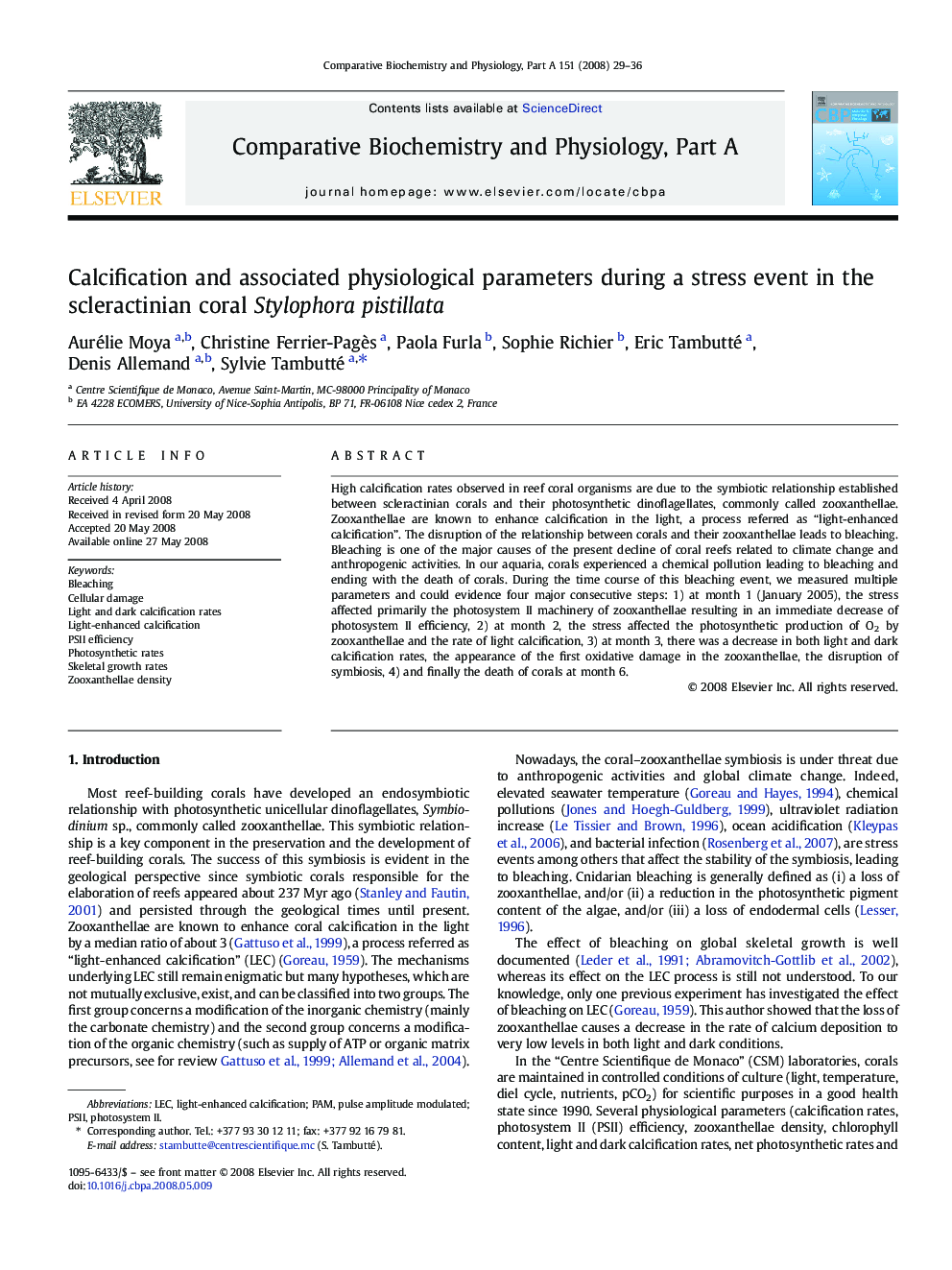| Article ID | Journal | Published Year | Pages | File Type |
|---|---|---|---|---|
| 1973488 | Comparative Biochemistry and Physiology Part A: Molecular & Integrative Physiology | 2008 | 8 Pages |
High calcification rates observed in reef coral organisms are due to the symbiotic relationship established between scleractinian corals and their photosynthetic dinoflagellates, commonly called zooxanthellae. Zooxanthellae are known to enhance calcification in the light, a process referred as “light-enhanced calcification”. The disruption of the relationship between corals and their zooxanthellae leads to bleaching. Bleaching is one of the major causes of the present decline of coral reefs related to climate change and anthropogenic activities. In our aquaria, corals experienced a chemical pollution leading to bleaching and ending with the death of corals. During the time course of this bleaching event, we measured multiple parameters and could evidence four major consecutive steps: 1) at month 1 (January 2005), the stress affected primarily the photosystem II machinery of zooxanthellae resulting in an immediate decrease of photosystem II efficiency, 2) at month 2, the stress affected the photosynthetic production of O2 by zooxanthellae and the rate of light calcification, 3) at month 3, there was a decrease in both light and dark calcification rates, the appearance of the first oxidative damage in the zooxanthellae, the disruption of symbiosis, 4) and finally the death of corals at month 6.
